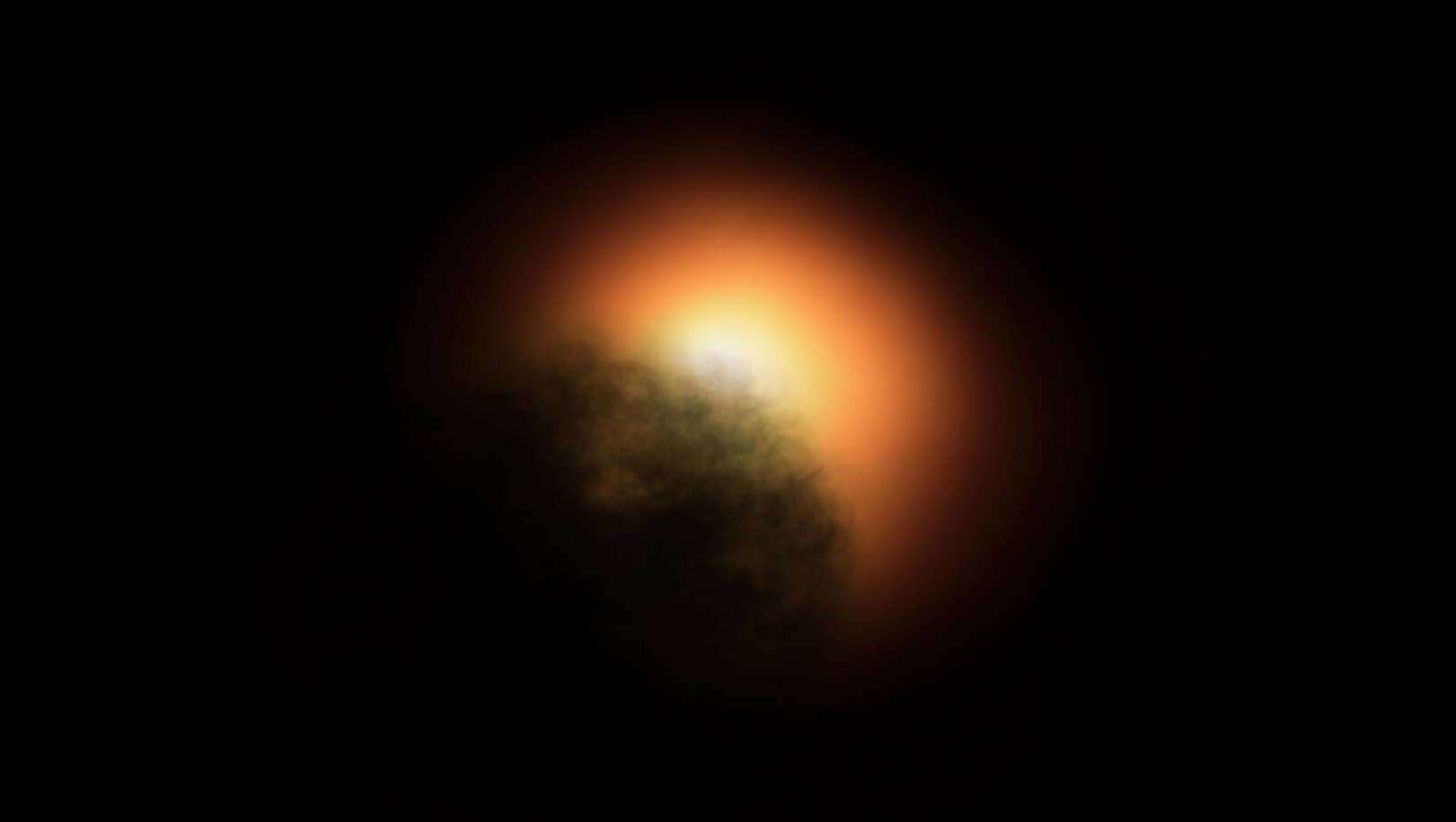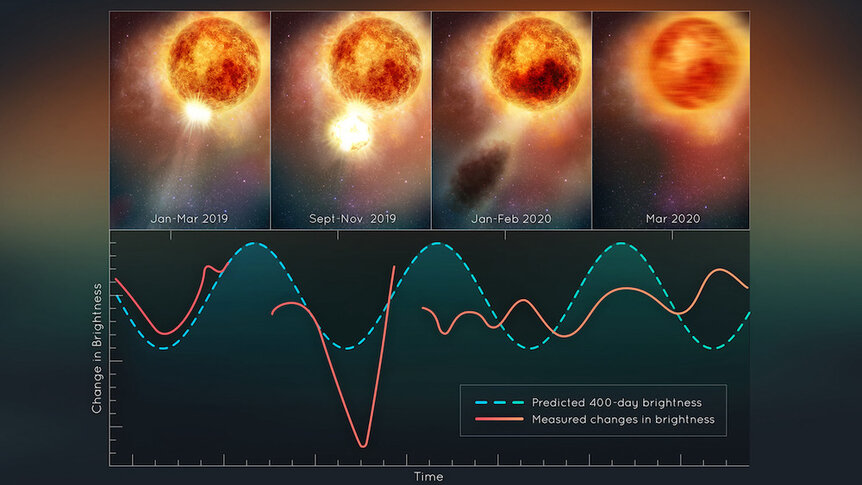Create a free profile to get unlimited access to exclusive videos, sweepstakes, and more!
Betelgeuse Did Explode in 2019, But it Wasn't a Supernova
Betelgeuse let off an explosion so powerful it made the star temporarily dimmer.

Stars are the warm beating hearts of planetary systems. Our planet’s entire ecosystem is built on energy from the Sun. Photons enter the atmosphere and interact with plants, which convert that energy into their bodies which animals eat, and so on. It’s a sunlight based economy. But setting up shop next to a star isn’t always sunshine and roses, as it were. Sometimes, stars throw temper tantrums.
That’s the basic premise behind the disaster film Solar Attack (streaming now on Peacock), in which a powerful coronal mass ejection (CME) from the Sun threatens to light the sky on fire. It’s also the explanation for the weird behavior of the star Betelgeuse over the last few years.
Betelgeuse Exploded in 2019, But it Wasn’t the Explosion We Wanted
Betelgeuse is a late-stage red giant star creeping slowly toward death. It is found in the constellation of Orion (look to that region of the sky for the Orionids meteor shower, happening right now) and it’s huge. It’s so big, in fact, that if we were to plop it down in the middle of our solar system, it’s outer edge would extend beyond the orbit of Jupiter. When Betelgeuse finally does give up the ghost, it will explode in a brilliant supernova so bright it will be visible from Earth during the day. That explosion could happen as soon as tomorrow or as far flung as 100,000 years from now.
RELATED: Earth Narrowly Missed a Solar Storm "Apocalypse" In 2012
In 2019, astronomers noticed the star dimming significantly and supposed they might have been watching a precursor to the big show. Instead, over the next few months Betelgeuse quietly went back to normal. Analysis of images taken before, during, and after the Great Dimming Event (GDE) have revealed that Betelgeuse didn’t actually get any dimmer, it just looked like it did because we were looking through a cloud of stellar debris.
Astronomers realized that while the amount of light we were receiving decreased, the amount of light in the photosphere of Betelgeuse ramped up. That’s consistent with a massive explosion of material from the surface of the star. Events like that happen on the Sun all the time, particularly when solar activity is high, like right now. When bits of the Sun’s surface get tangled up and cast off, we call that a coronal mass ejection and, while they won’t burn the planet, they do cause problems with satellites and electrical equipment.
RELATED: Betelgeuse aftermath: Still recovering from blowing its stack
"We've never before seen a huge mass ejection of the surface of a star. We are left with something going on that we don't completely understand. It's a totally new phenomenon that we can observe directly and resolve surface details with Hubble. We're watching stellar evolution in real time," said Andrea Dupree of the Center for Astrophysics, Harvard & Smithsonian in Cambridge, Massachusetts, in a statement.
The explosion on Betelgeuse was so massive it needed a more impressive name; astronomers are calling the event a Surface Mass Ejection (SME). We’re not sure the cause of the explosion but astronomers estimate the mass of the SME at roughly 400 billion times the mass of a typical CME. While it may not have been a warning shot before Betelgeuse goes supernova, the event is teaching us more about how stars lose mass, and how they evolve, toward the end of their lives.
While your waiting for Betelgeuse to blow its top, catch Solar Attack, streaming now on Peacock.



























